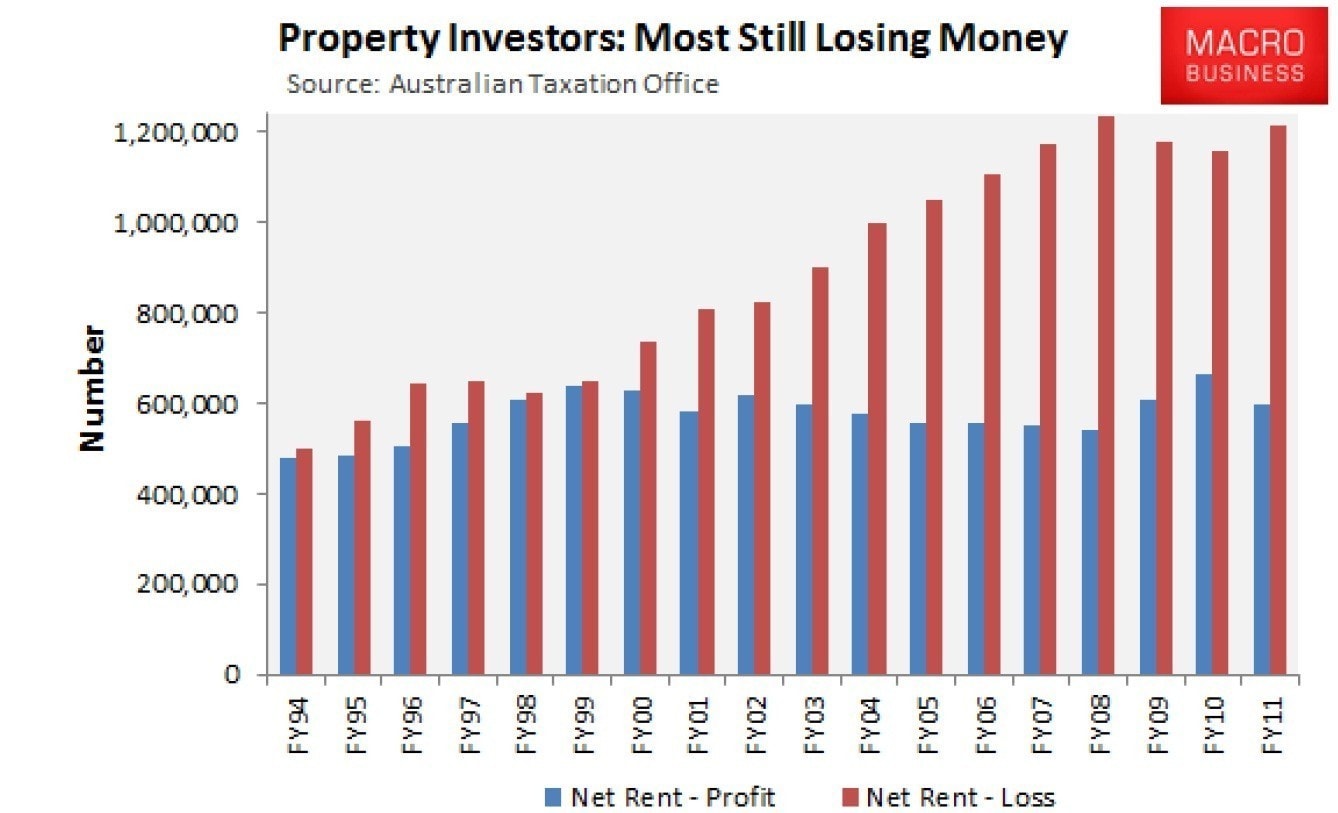Proportion of landlords making rental losses peaked in 2008: Macrobusiness
The onset of the GFC saw the highest proportion of Australian landlords claim losses on their property investments.
In the 2008 tax year, around 1.2 million taxpayers said they made a net rent loss on their investment properties compared with around 500,000 who made a net rent profit, ATO figures analysed by MacroBusiness show.
Property investors claimed a record $9.1 billion in aggregate losses in 2008, lower than $7.9 billion in aggregate losses claimed in 2010-2011 when 1,213,597 out of 1,811,174 landlords held negatively geared property investments.
Analysis by MacroBusiness shows that a greater proportion of property investors negatively gearing their investments from 2002 to 2008, coinciding with booming property markets before the GFC brought the party to a halt.
In 2009 and 2010, as the property market underwent a correction and property investors became more cautious, fewer landlords negatively geared their investments.
In 1998-99 – just before the Howard government halved capital gains tax and mortgage lending became more easily available - the number of investors with positively geared investments was roughly equal to those with negatively geared investment.

“Up until 2000, property investment was more or less neutral from an income perspective, with aggregate rental receipts covering costs,” says MacroBusiness editor David Llewellyn-Smith.
“Since then, however, the situation has changed markedly, with the latest ATO data showing that there were just over 1.2 million negatively geared property investors in Australia in 2010-11, representing two-thirds of all property investment,” says MacroBusiness's Leith van Onselen.
“From 2000 onwards, however, net rents deteriorated sharply; with aggregate losses totalling $7.9 billion in 2010-11,” he says.
The logical explanation for the decline in net rental returns from 2000 and the surge of negatively geared property investment, says van Onselen was the Australian Government’s decision in 1999 to change the nation’s capital gains tax (CGT) rules by halving the rate of tax payable on capital gains earned on assets held for more than 12 months.
“This change, in combination with the negative gearing provisions allowing investors to offset rental losses against other (labour) income, encouraged investors to speculate on rising housing values in full knowledge that any losses would reduce their overall tax liability, and any capital gains would be taxed at only half the rate of labour income,” says van Onselen.
“The net result of these policies is that Australian investors have increasingly become Ponzi borrowers – Hyman Minsky’s term for borrowers who rely heavily on capital gains to repay debt and interest – in the belief that housing is a sure fire investment,” he says.